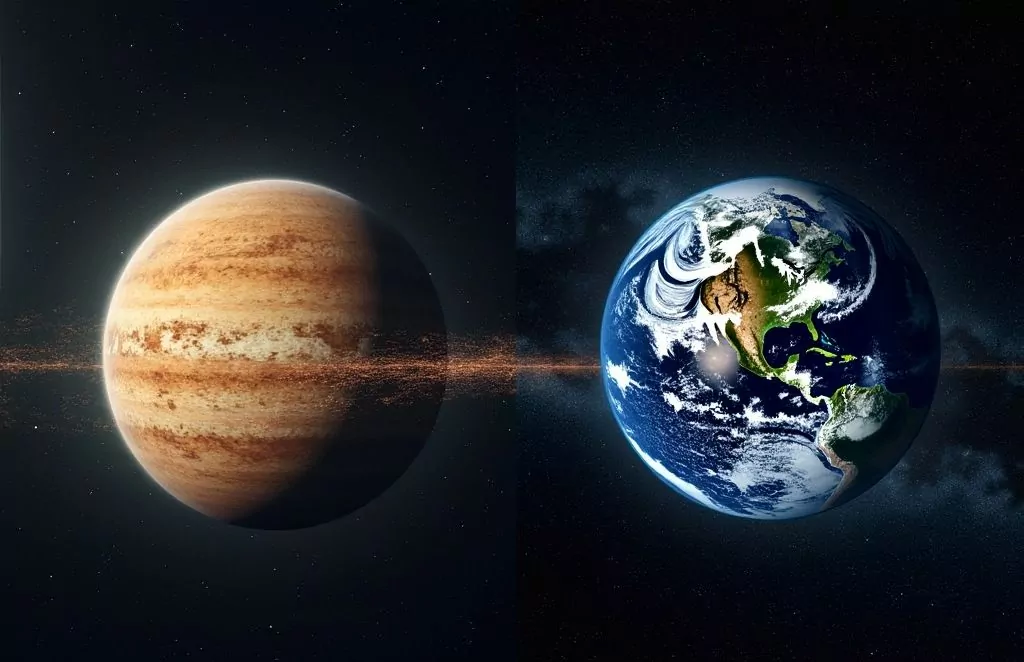
Earth isn’t just a chunk of rock floating in space. It’s a complex and vulnerable system yet, at the same time, remarkably resilient. Anyone who has ever wondered how we manage to survive under a constant stream of cosmic radiation. Has probably heard about Earth’s magnetic field. But how much do we really know about this invisible shield? Have you ever thought that it’s not just an abstract concept from a geophysics textbook. But a real defense mechanism that keeps our planet relatively safe?
And that’s not just a figure of speech. The magnetic field is one of the most important “invisible” forces. That sustains and protects our home in space. It’s just so familiar that most people barely give it a second thought. But what if it suddenly disappeared? That sounds unsettling, doesn’t it?
- 1 What is Earth’s magnetic field and where does it come from?
- 2 Why is the magnetic field more than just physics?
- 3 Geophysics
- 4 Earth’s magnetic field and protection from cosmic radiation
- 5 The impact of the magnetic field on modern life
- 6 Magnetic poles and their drift. What does it mean for us?
- 7 Why is it important to preserve and study the magnetic field?
What is Earth’s magnetic field and where does it come from?
The magnetic field is a phenomenon generated by the movement of molten iron in the planet’s core. If you try to imagine it, Earth is like a giant dynamo spinning deep beneath the surface, producing a magnetic field that stretches far beyond the atmosphere. This magnetosphere acts like an invisible dome surrounding the planet. Deflecting dangerous solar radiation and streams of charged particles coming from the Sun.
Geophysics – the science that studies these processes reveals many of the secrets behind it. What’s fascinating is that the magnetic field isn’t static. It changes over time. Sometimes, Earth’s magnetic poles even reverse and that’s not science fiction. But a scientifically documented fact.
Remember how they briefly mentioned this in school? The magnetic poles drift several kilometers per year. Most people don’t notice it at all, but for scientists, it’s like a signal beacon. Bhinting at ongoing changes deep within the planet.
Why is the magnetic field more than just physics?
The real wonder lies in how this geophysical phenomenon protects life on Earth. Imagine our planet as a giant spaceship, and the magnetic field as its shield. It deflects streams of solar wind which, if they broke through, could destroy the ozone layer or render the surface uninhabitable.
And here’s where it gets even more fascinating: the magnetic field doesn’t just protect us it helps us navigate. Insects, birds, even sea turtles use magnetic lines to find their way. Humans once relied on it, too: the compass was one of the first inventions that fundamentally changed human civilization.
But as technology has rapidly advanced, new challenges have emerged. Satellites, GPS systems, and even power grids on Earth depend on the stability of the magnetic field. Scientists still don’t fully understand how changes in the magnetosphere will affect these systems in the coming decades. And this isn’t just theoretical so-called geomagnetic storms are already capable of disrupting electronics.
Geophysics
Geophysical studies of the magnetic field are like reading the Earth’s diary. Every shift in the magnetic poles, every fluctuation in the field tells a story about what’s happening deep within the planet. Recently, NASA released new data on the state of the magnetosphere. Revealing that our protective shield is weakening in certain regions like a crack in the armor.
We’re not on the verge of disaster, of course. But these signs show that we need to monitor changes closely. The models developed by geophysicists help predict possible future scenarios. Who knows maybe in the future this will allow us to better prepare for geomagnetic storms. Which are already capable of affecting aviation and communication systems today.
Earth’s magnetic field and protection from cosmic radiation

What’s most striking is the “machine” operating deep inside the planet. The mechanism that generates the magnetic field comes from the movement of liquid iron and nickel in Earth’s outer core. This motion creates powerful electric currents, which in turn generate the magnetic field.
It’s a massive, giant engine that never stops, even though it works deep underground, far from our view. This “machine” prevents our planet from losing its shield. And although it doesn’t always function steadily, the magnetic field has remained our primary protection from solar radiation for thousands of years.
Sometimes there are “flares” on the Sun coronal mass ejections that carry charged particles. Without the magnetic field, these particles would break through to Earth, harming all living things, including humans. Yes, it may sound like science fiction, but it’s the reality we live in.
The impact of the magnetic field on modern life
It may come as a surprise to many. But the magnetic field also affects our everyday technologies. GPS, satellites, and radio communication all depend on the stability of the magnetic field. When geomagnetic storms occur, they can disrupt signals and cause outages in power grids.
Remember those cases when flights changed routes due to geomagnetic storms? That’s because the magnetic field becomes unstable under such conditions. For aviation, this is a matter of safety — especially in polar regions, where communication issues can arise. This isn’t fiction. But a real situation that pushes scientists and engineers to closely study the magnetosphere.
Magnetic poles and their drift. What does it mean for us?
Interestingly, Earth’s magnetic poles don’t stay in one place. Scientists have observed that the north magnetic pole has been moving at about 50 kilometers per year toward Siberia in recent decades. This isn’t just a point shifting on the map. It signals changes in the planet’s internal dynamics.
This drift already affects navigation systems and requires constant updates to maps and data. In the future, a full “flip” of the poles may occur. When the north and south poles switch places. According to scientific research. Such reversals happen every few hundred thousand years and are not considered catastrophic.
Why is it important to preserve and study the magnetic field?
All of this shows that the magnetic field is tied to ecology, science, technology, and even culture. And due to its unpredictability, scientists around the world invest heavily in its research.
What we know today is only the tip of the iceberg. Geophysicists’ forecasts help us prepare for potential changes and develop technologies.
In summary: Earth’s magnetic field is our true invisible shield. It protects us daily from cosmic threats and helps all living things survive on the planet. It is an extremely complex geophysical process that we are only beginning to understand. But one thing is clear: without this shield, life on Earth would be impossible.
Learn more